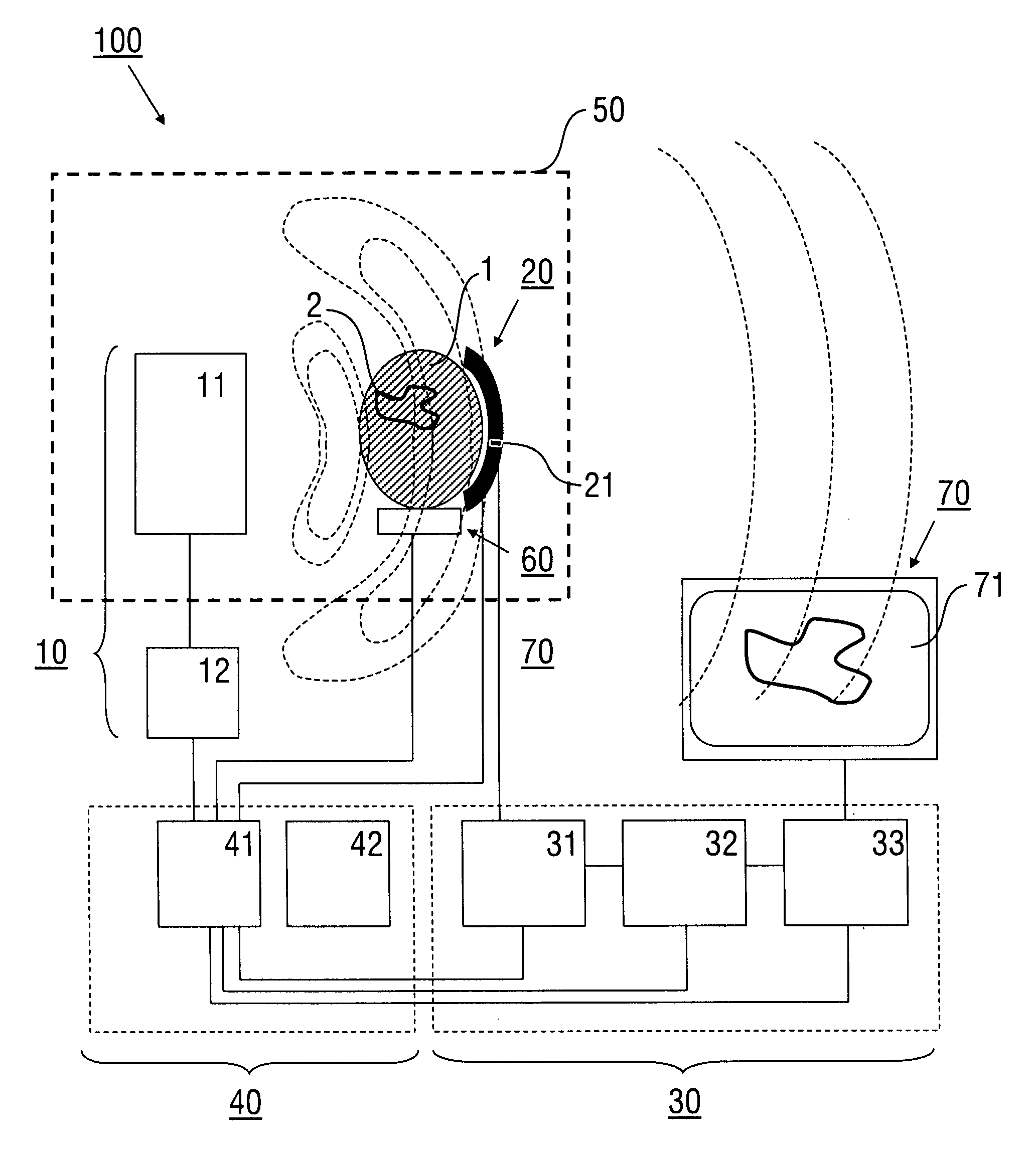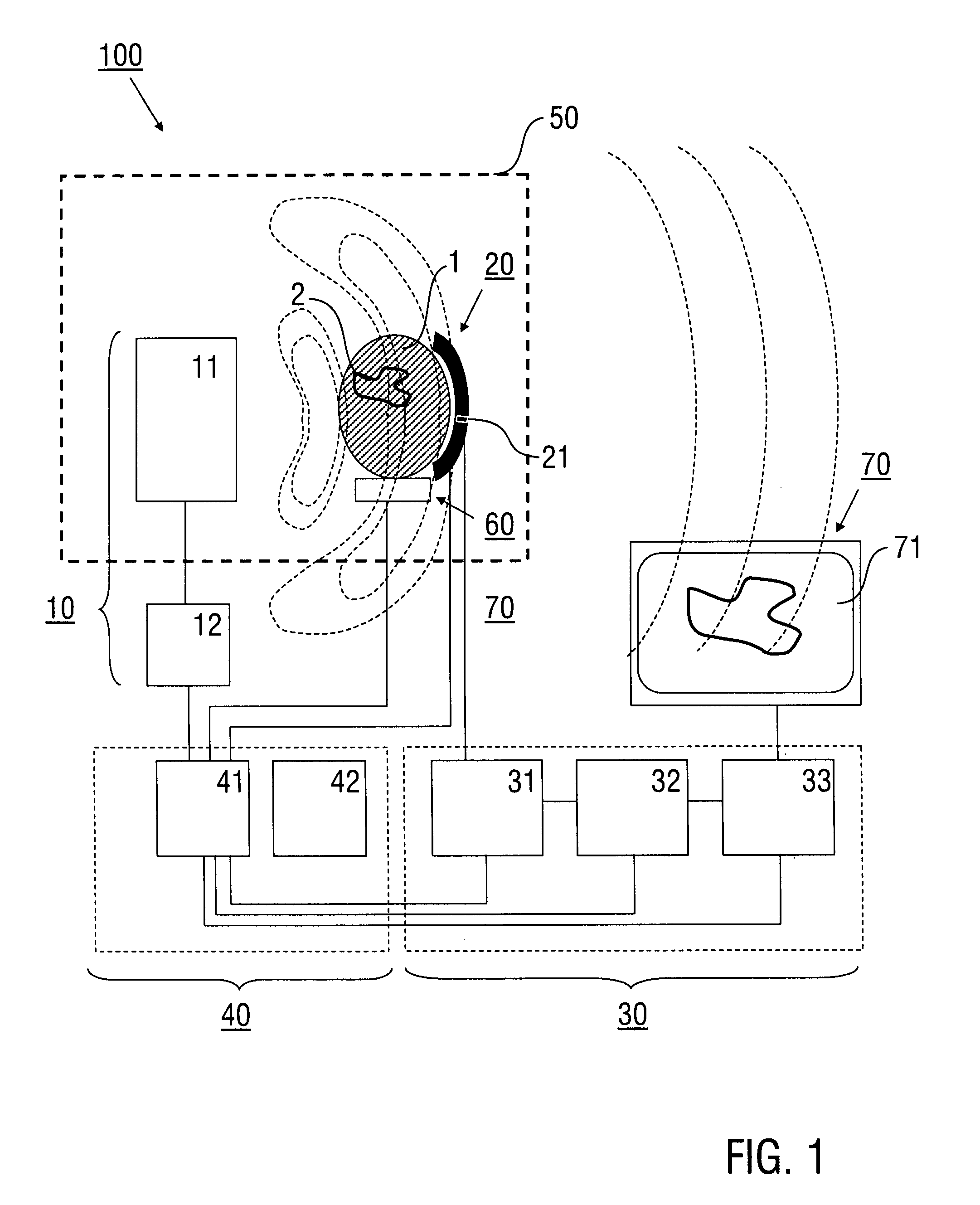Method and device for near-field dual-wave modality imaging
a dual-wave modality and imaging technology, applied in the field of methods and devices for nearfield imaging of a region of interest, can solve the problems of inability to detect high sensitivity, advanced radio-chemistry expertise, and the need for cyclotron facilities,
- Summary
- Abstract
- Description
- Claims
- Application Information
AI Technical Summary
Problems solved by technology
Method used
Image
Examples
Embodiment Construction
[0021]We provide a method of near-field imaging of a region of interest (ROI) in an object, whereas the ROI is subjected to an input of near-field electromagnetic energy in the radiofrequency range, a mechanical wave response is detected in response to the near-field electromagnetic energy input in the ROI, and signals representing the detected mechanical wave response are converted into image data representing an image of the ROI. The method relies on near-field exposure of the object or tissue to electromagnetic sources of safe energies and allows image formation based on the mathematical treatment of detected data generated as readings of pressure waves generated by near-field energy absorption from tissue elements. Contrary to conventional techniques, the ROI is a sample region which is located in the near-field. The ROI located in the near-field is imaged. We found that utilizing the near-field is not limited due to the heterogeneous structure thereof, but rather associated wit...
PUM
 Login to View More
Login to View More Abstract
Description
Claims
Application Information
 Login to View More
Login to View More - R&D
- Intellectual Property
- Life Sciences
- Materials
- Tech Scout
- Unparalleled Data Quality
- Higher Quality Content
- 60% Fewer Hallucinations
Browse by: Latest US Patents, China's latest patents, Technical Efficacy Thesaurus, Application Domain, Technology Topic, Popular Technical Reports.
© 2025 PatSnap. All rights reserved.Legal|Privacy policy|Modern Slavery Act Transparency Statement|Sitemap|About US| Contact US: help@patsnap.com



